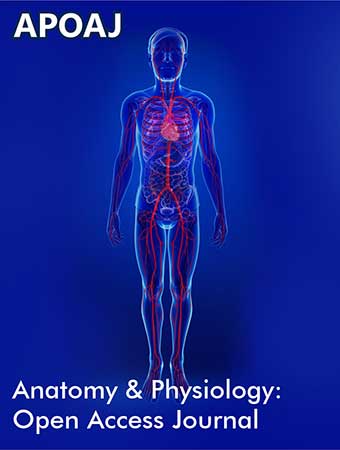 Research Article
Research Article
Famous Physiologists Ivan Sechenov in the History of World Physiology in the Reflection Collectibles
Bugaevsky KA*
Department of Medical and Biological Foundations of Sports and Physical Rehabilitation, The Petro Mohyla Black Sea State University, Nikolaev, Ukraine
Konstantin Anatolyevich Bugaevsky, Assistant Professor, The Petro Mohyla Black Sea State University, Ukraine.
Received Date: April 18, 2023; Published Date: May 01, 2023
Abstract
The article presents the materials of a new study on reflection in modern means of collecting, events of the history of world medicine and human physiology associated with the name of the Great Russian Scientist, Professor Ivan Mikhailovich Sechenov. The article presents as short biographical information about scientists and rich illustrative materials, in the form of postage stamps, postal cards and envelopes, memorable coins and medals, badges dedicated to the Great Physiologist.
Keywords:Ivan Sechenov; History of Medicine; Physiology; Philately; Phaleristic; Numismatics
Introduction
World medical science knows many glorious names of scientists who contributed fundamental data to the formation and development of various medical fields. Among such people, who determined the course of world physiology, can be safely attributed to the great Russian physiologist, a man of world renown in science, Ivan Mikhailovich Sechenov (1829-1905). This scientist, studied the physiology of the nervous system, was engaged in the extraction of all gases from the blood and calculated their amount in erythrocytes and blood serum, and also, after conducting a series of experiments, the scientist concluded that red blood cells are oxygen carriers to tissues from the lungs and carbon dioxide to the lungs from tissues [1].
Scientific Activities, Particularly in Physiology
Speaking about the scientific achievements of Ivan Sechenov, the following should be noted - In his scientific research, Ivan Sechenov, discovered the phenomena of fluorescence of the lens, central inhibition, summation in the nervous system, “Sechenov reflex”, established the presence of rhythmic bioelectric processes in the central nervous system, justified the importance of metabolic processes in the implementation of excitation. Sechenov made a great contribution to the study of the physiology of higher nervous activity and reflexes. In his doctoral dissertation (1876 - “Studies on the physiology of the brain”) he studied the effect of the brain on breathing and blood circulation. He was the first in Russia to carry out experiments on registration of electrical phenomena in the dog brain (1876-1891); he was the first in the study of the physiology of hypnosis in animals and humans. In the field of physiology of nervous activity, his main works of Sechenov are devoted to the physiology of the nervous system. He discovered central inhibition (the so-called Sechenov inhibition) in the central nervous system - the ability of the brain to suppress motor activity and autonomic processes in the body. Sechenov discovered spontaneous rhythmic oscillations of electrical potentials in the medulla oblongata, electrical reactions of the medulla oblongata to stimulation of peripheral nerves and the spinal cord, was the first to observe the summation of excitation in the nerve centers. The scientist established the basic laws of reflex activity, proved that all the acts of conscious and unconscious life are reflexes by origin and became the predecessor of Ivan Pavlov in creating a new direction of science - the physiology of higher nervous activity. Sechenov viewed mental activity as a function of the brain and advocated the idea that this activity was determined by the conditions of existence. In his works “Brain Reflexes” (1863) and “Who and How to Develop Psychology” (1873) he was the first to point out the connection between the physiological and psychological.
Aim of the work
The purpose of writing this research article is the desire, to present to the public and all interested readers, information about the representation in collectibles, such as philately, faleristics and numismatics, information about the scientific feat and contribution to world physiology, the famous Russian scientist - Ivan Mikhailovich Sechenov.
Material and Methods
In carrying out this research work, we used the method of in-depth literary-critical analysis of available scientific sources of information on the issue under study, using reference books, encyclopedias, catalogs, specialized periodicals, and Internet resources.
Result and Discussion
We would like to start my story about the representation of information about Ivan Mikhailovich Sechenov in the world’s collectibles with the most represented department - philately. Basically, these are postage stamps, envelopes, cardmaximums, small stamp sheets and postcards of the USSR and modern Russia and Ukraine. Although, other countries also paid tribute to the memory of this great scientist-physiologist, in particular - the state of Equatorial Guinea [2]. These collectible philatelic materials are shown in (Figure 1).
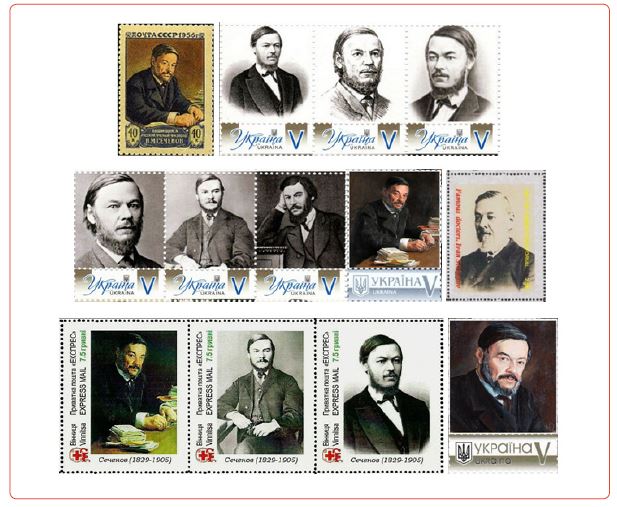
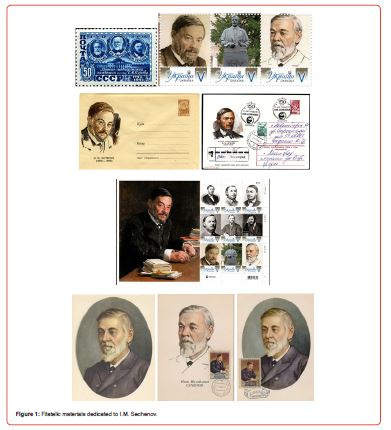
The next selection of commemorative medals and coins of the USSR and Russia, shown in (Figure 2), belongs to the section of numismatics. On these collection rest. Materials, there are portraits of the scientist, his monuments, universities that bear his name are presented [1,3-7]. In conclusion of this article, in (Figure 3), a small selection of phaleristic materials is presented, in the form of commemorative badges, from the period of the USSR and Russia, dedicated to I.M. Sechenov and his scientific activities in the field of physiology [8-10].
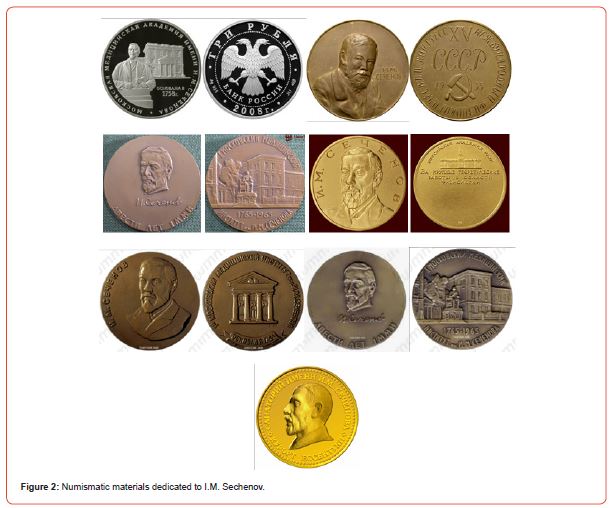

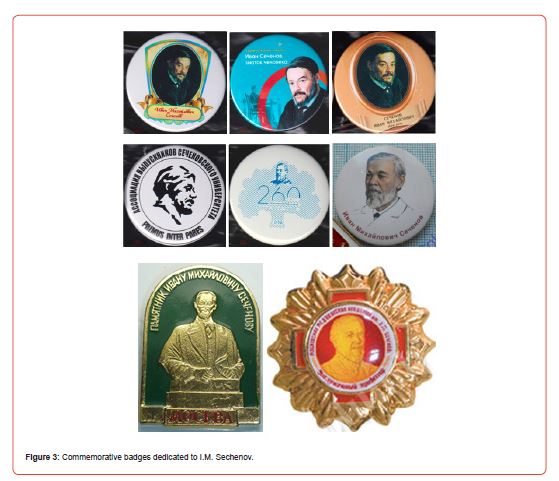
1. The collection materials presented in this article, in full, vivid and informative, represent the memory of the famous Russian physiologist, with a worldwide reputation, I.M. Sechenov, in such collectibles as philately, faleristics and numismatics.
2. Modern means of world collecting, in all their diversity, are quite capable of preserving and conveying to the interested reader and researcher the maximum amount of information, incl. and on the history of medicine.
Acknowledgement
None.
Conflict of Interest
No conflict of interest.
References
-
Bugaevsky KA*. Famous Physiologists Ivan Sechenov in the History of World Physiology in the Reflection Collectibles. Anat & Physiol Open Access J. 1(3): 2022. APOAJ.MS.ID.000511.
-
Human physiology, Medicine, Stamps, Metabolic processes, Numismatics, Postage stamp, Philatelic materials, Faleristic material
-

This work is licensed under a Creative Commons Attribution-NonCommercial 4.0 International License.



